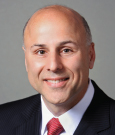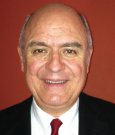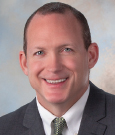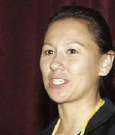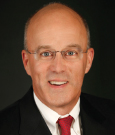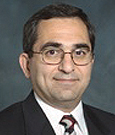Oncologists and third-party payers are already experiencing changes as a result of the Affordable Care Act, which earned an “average” rating by a panel of providers, payers, and patients assembled at the 19th Annual Conference of the National Comprehensive Cancer Network (NCCN) in Hollywood, Florida. In an NCCN Roundtable titled, The Affordable Care Act: Where Are We Now? they shared their perspectives about the Affordable Care Act’s successes and failures, its impact on contemporary oncology practices, and the potential for the newly insured population to shake up the economics of cancer care.
The panelists rendered the Affordable Care Act a grade of 5 on a scale of 0 (“a flop”) to 10 (“the most effective program ever”), when asked to rate it by Roundtable moderator Clifford Goodman, PhD, who is Senior Vice President and Principal at The Lewin Group, Falls Church, Virginia. The ASCO Post has summarized the discussion below.
Has the Profile of Cancer Patients Changed?
Enrollees of the Affordable Care Act–associated insurance programs appear to be previously uninsured or underinsured, and somewhat older and sicker than typical oncology patients, panelists noted.
“The hope was that 40% of the enrollment would be in the younger population, under 35, but what we are seeing is that it is closer to 25% to 27%,” said Elizabeth J. Fowler, PhD, JD, Vice President of Global Health Policy at Johnson & Johnson. Dr. Fowler previously served as Special Assistant to the President for Health Care and Economic Policy at the National Economic Council and played a role in developing the Senate version of health reform.
In Kentucky, due to the well-run state exchange and Medicaid expansion, many adult patients are seeing a primary care physician for the first time and undergoing routine cancer screenings. In turn, oncologists are seeing an influx of these new patients, many of whom present with complex cases due to delayed diagnosis, according to John C. Winkelmann, MD, of Oncology Hematology Care, Cincinnati.
At the University of Colorado Cancer Center, Aurora, physicians are seeing more medically indigent adults and newly underinsured patients, now being insured within a narrow network and therefore lacking the access to comprehensive care that was previously available through employer-sponsored programs. These groups qualify for Medicaid or have purchased “bronze packages” with large copays or deductibles, noted W. Thomas Purcell, MD, MBA, Executive Medical Director of Oncology Services at the University of Colorado Hospital.
New Risk Pools
Dr. Fowler explained that this poses risk in oncology because, when the Affordable Care Act was first implemented, healthy patients younger than 35 were expected to sign up in droves. Instead, the current enrollee is middle-aged, a population more likely to have cancer and comorbidities and to require more expensive treatment.
With more patients potentially requiring more expensive cancer care, Dr. Goodman asked the payer representatives how they assess their risk pools. Both acknowledged that at this early point in time, the necessary claims data are not available to adjust premiums, and may not be available for a while.
“You do what you can to manage your risk,” said Lee N. Newcomer, MD, MHA, Senior Vice President of UnitedHealthCare. “You start slow and learn, like with any other new process…. We will be ready to get fully committed and expand as soon as we understand how it’s going to work.”
Michael Kolodziej, MD, National Medical Director of Oncology Strategy for Aetna, agreed, commenting, “Given the uncertainty, you manage what you can manage. Many of the strategies to manage the risk of this unknown pool are the same strategies we use to manage the risk in the pool that we do know about.”
According to the panel, risk is not only on the horizon for payers and providers, but also for patients. Those who should be particularly concerned are patients with rare cancers, since they require state-of-the-art treatment that is not always available in the community setting. They seek care at larger, academic centers that are not within their narrow network and are forced to pay for their care out of pocket, noted Dr. Purcell.
“What worries me is that the narrow network is defined by cost, the decision is based purely on cost, and the quality aspect may be an issue,” he added.
What Are the Problem Areas?
“I hear from patients all the time about difficulties signing up,” said Mohammed S. Ogaily, MD, Medical Director of the Oakwood Center for Hematology and Oncology in Detroit, and President of the Michigan Society of Hematology and Oncology.
Dr. Newcomer flagged the unintended consequence of making quick decisions in the design of the bill, and commented on the need to reprogram or reverse initial regulations and policies, which had financial consequences for insurers. “Getting to that point of stability, where decisions are made and we can move forward, will be a good thing for consumers, payers, and the government,” he suggested.
“What’s missing from the [Affordable Care Act]?” Dr. Goodman asked. Dr. Winkelmann suggested that oncology societies such as ASCO would prefer more explicit provisions for clinical trial enrollment, so that interested patients would not be financially penalized. Dr. Newcomer said he would add a “medical necessity clause” that would create incentives for choosing the most cost-effective option from among the many offered in the NCCN guidelines.
Shift Toward Rewarding Value
Dr. Newcomer’s suggestion that cost-effectiveness be a part of any new health-care model led to a larger discussion of the need to move away from the current reimbursement system. “The intent of the [Affordable Care Act] was to move us from a fee-for-service system that rewards volume to a system that rewards value and looks at outcomes and quality,” explained Dr. Fowler.
“Financial incentives keep us locked into old models,” added Dr. Newcomer. His suggestion was for the expanded use of advanced nurse practitioners and physician assistants, who could cost-effectively administer the treatment plan that oncologists develop, especially given the anticipated shortage of oncologists. This is one example of the need to think outside the box, he said. “If we rethink it, we can solve the problem,” Dr. Newcomer proposed.
Panel participants acknowledged that just 90 days into the implementation of the Affordable Care Act, it is too soon to tell what the ultimate benefits of this aspect of health-care reform will be. However, their consensus was that several factors will be important for its success: integrated care, payment reform, and an increased focus on value and quality.
And regardless of the final makeup of the newly insured population, the experts agreed that the expansion of health-care coverage is inherently a good thing, and the Affordable Care Act can be credited for that. “Better coverage for more Americans, especially with certain provisions like screening,” said Dr. Kolodziej, “is good for people.” ■
Disclosure: visit http://www.nccn.org/disclosures/default.asp.

